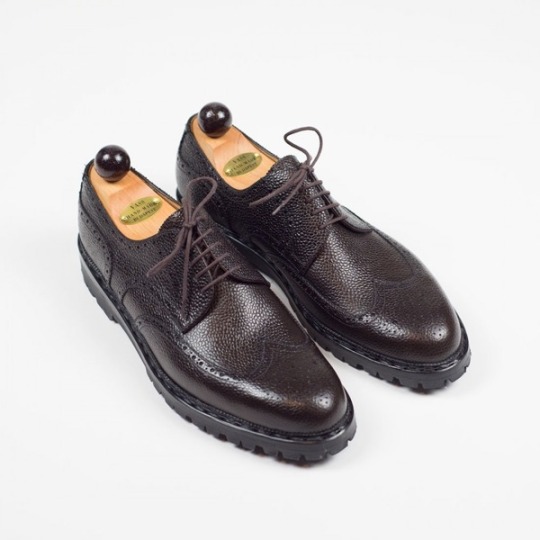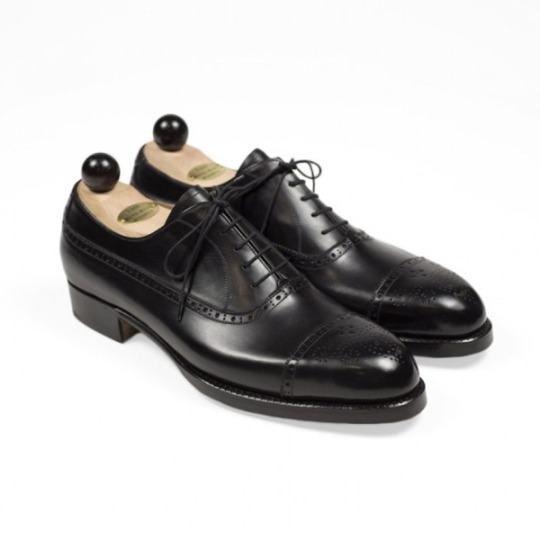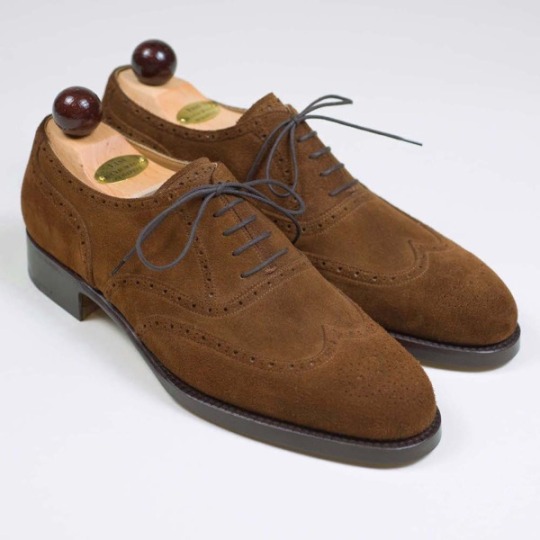Do you want to look at oxfords, or derbies? This is the first question I ask customers when they ask for a dress shoe option to pair with a suit. This question may seem like a no brainer to people who know the ins and outs of dress shoes, but to the average guy, the question isn't so simple. Not least because they don’t know what an oxford or a derby is.
Many gentlemen tend to confuse wingtips, oxfords, derbies, cap-toes and brogues, or use any of these terms to refer to dress shoes generally. All laced dress shoes are either oxfords or derbies. The characteristic that distinguishes between the two is the lacing. An oxford has closed laces and a derby has open laces. I don’t mean that the derby’s laces are always untied. I mean that on a derby, the laces are attached to pieces of leather that separate from the rest of the shoe, allowing them to open wider, like so:

Oxfords instead have their eyelets on a piece that is sewn into the rest of the shoe (or, in the case of wholecuts, undifferentiated from the rest of the shoe):

This is the only difference, albeit a significant one.
A derby is more casual because the open laces make them easier to get on, look more casual - the profile of the shoe is less sleek, more ornamented. This doesn’t mean you can’t wear a derby with a suit; there are other factors tthat determine how dressy a shoe is. However as a general rule, a derby is less formal than its oxford counterpart.
An oxford is more formal, by its simpler design and more urbane ancestry. For the dressiest business occasions, nothing else is really correct. Only a black oxford will do, preferably a cap-toe or perhaps a punched cap.
Both oxfords and derbies come in many different styles. A few of the most common:
Cap-toe: As mentioned, this is the most formal option, and looks exactly as it sounds. For this reason, they’re usually oxfords, although the endless appetite (someone’s, I’m not exactly sure whose) for new configurations has driven a few cap-toe derbies into production.
Wing-tip: Wing-tips have two types, long-wings (where the “wings” extend all the way to the shoe’s back heel), and short-wings (where the “wings” taper off about mid-foot). Both can be made in either oxfords or derbies. Because the more a shoe has embellishment wise, the more casual it is, wingtips are more casual than cap-toes.

Brogue: The small dot pattern than is found on cap toes, wing tips and many other types of shoes. Brogues are further divided into quarter-brogues (also called punch-caps - they’re a cap-toe with broguing across the top of the cap), half-brogues (quarter-brogues with a punched design or “medallion” on the toe) and full-brogues (a wingtip with broguing all over). The original reason for broguing was so a shoe could properly drain when worn in wet weather. This is one further reason that brogues are more casual, even though the holes are only for design purposes today.
Split-Toe: Split-toes are most common in derby style shoes, as they are a more casual style. The classic split-toe is made with two separate pieces of leather joined by a seam that runs down the toe of the shoe. But sometimes this same design is created using a vamp that is pinched together and sewn.

Since the group of people who know the meaning of these terms is fairly small and does not include everyone working at menswear stores, you’ll often see styles misidentified even on the websites of respected retailers. But this group now includes you, so you need not worry about asking for an oxford and ending up with a derby.